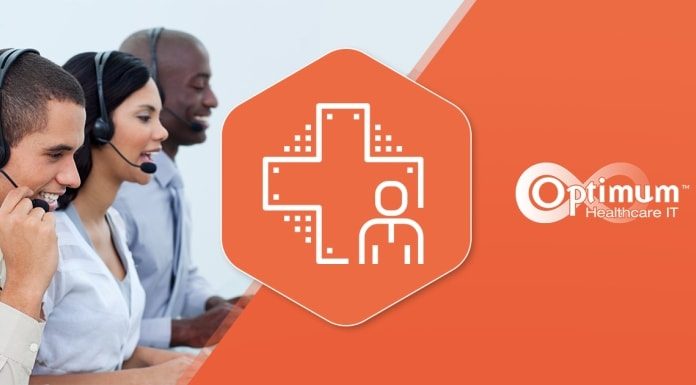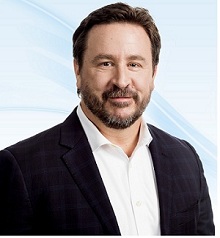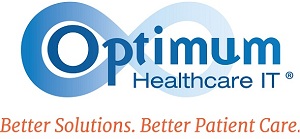Through the wave of enterprise electronic health record implementations over the past ten years, I’ve seen and heard many organizations come to the conclusion that their traditional help desk management model is not an adequate resource for their end-users; Particularly the clinically oriented end-users.
Many would probably agree, as do I, that the traditional approach is indeed ineffective. What I have come to question, however, is whether decision-makers truly recognize why the conventional service desk models aren’t working, because many of the revised models don’t seem to be moving the needle.
I transitioned from healthcare operations to healthcare IT a little over a decade ago. It didn’t take me long to recognize the underlying reason why IT in healthcare struck me as complicated and often maligned by internal leaders. Simply, it was the unprecedented complexity and diversity of the operational model and users they serve.
In the dozens of organizations I’ve associated with directly or indirectly, I’ve estimated that a healthcare organization doing $1 billion in revenues has approximately 600 unique job classifications in the human resources system, and about 400 software applications in their IT portfolio. Whether it’s the energy, education or finance industries, I’ve never seen anything close to these numbers, and this doesn’t even take into consideration the criticality of the operations being supported.
Nowhere did this complexity or diversity manifest itself more obviously to me than in the IT service desk. When an agent answers the phone, on the other end of the line could be a physician from one of dozens of sub-specialties, hospital nurse, clinic nurse, respiratory therapist, housekeeper, surgery scheduler, executive, physical therapist, O.R. nurse, department manager or billing representative. And they are calling about a question on one of literally hundreds of software applications and hardware devices.
Questioning the effectiveness of traditional models typically seem to surround the adequacy of the staff and not the efficacy of the model. Additionally, and more understandably, in my opinion, it also questions the minority of the ticket types more-so than it does the majority of them. That is, the agents in these models are capable of executing the more common types of interactions like resetting a password or logging/routing a true break/fix issue that even the most qualified technician would not be able to resolve upon an initial phone interaction.
It’s the inability to achieve first call resolution on the minority “how-to” questions from clinical end-users, the questions about how to navigate a workflow through to completion within the system, which exposes the traditional models as less-than-effective.
When seeking solutions, looking at the individuals versus contemplating the larger model, or even the over-arching objective, strikes me as an initial and common pitfall. The adage, “form follows function,” seems to apply here. For starters, what is the function we need to perform better in the new enterprise EHR environment? While many would say service desk is the function, I would argue that user support is the objective for which service desk is but a single sub-function.
When “service desk” is the focal point over “user support,” it is highly likely the wrong resource type is going to be assigned to the function. When seeking an optimized clinical service desk solution, one of the most common interventions I see organizations take is outsourcing. In most cases, I’m not hearing or seeing positive results in this area. If it’s simply a different resource taking the same old approach, the outcome isn’t going to be much different.
The outsourced resources are working under the same model that is preventing organizations from achieving the results they want with their internal resources.
The single most limiting factor under the traditional service desk model, whether using outsourced or internal FTE labor, is that the sole function of the resource is to sit in a cubical each day and answer a telephone.
Deep technical knowledge of a given EHR system is inferior to specific knowledge of an organization’s unique workflows when it comes to success on the service desk.
While the service desk is an important piece of the EHR user support continuum, it cannot be the only accessible means of support to end-users. Reducing the number of calls to the service desk should be a higher priority for measurable improvement than increasing the percentage of first call resolution. This can only be achieved when there are EHR user support resources whose function includes, but also goes well beyond, taking a rotation on the clinical service desk.
The concern healthcare IT organizations have with this approach is that their traditional support models don’t currently include a resource type for this effort. The function is being dictated by existing form, instead of form following necessitated functions. The existing service desk technicians are inadequate, and the work cannot be transitioned to other traditional roles such as trainers or application analysts for various reasons.
If adding a new resource type sounds expensive, my experience shows it is not. In fact, I have seen it reduce costs in organizations who have effectively implemented it. I like to refer to a user-centric support role as a Practice Support Specialist. I’ve seen organizations use the role to varying degrees of success with a critical factor being a clear definition of role and responsibility. A common shortcoming I’ve seen with this role is a lack of role definition and the exclusion of service desk rotation in the duties.
Typical duties of a Practice Support Specialist should include:
- Liaison with clinical areas
- Provide tips, tricks and updates at standing department and clinical meetings
- Proactive rounding in assigned areas
- Participate on process improvement teams
- Research and track service desk tickets from assigned areas
- Minimum and simple system build
- Define design requirements for approved optimization and enhancements efforts
- Advise governance bodies on prioritization of projects for greatest user impact
- Rotation on clinical service desk
I’ve seen organizations create this role by transition FTEs from the areas of service desk, application analyst and training. The result is a total net reduction in FTEs for the IT department. The introduction of this resource type takes a large burden off the application team because most problems are resolved by showing end-users how objectives can be achieved using the system as it is currently deployed. The absence of this role resulted in “fixes” or re-design of the system where neither were warranted.
One of many other positive results of this approach is reducing total call volume to the service desk. End-users find that simple questions or issues can now be resolved through other proactive measures.
Practice Support Specialists perform a weekly rotation on the service desk at intervals dependent on the size of the organization and the number of staff. Law of diminishing returns has me recommend that PSS staff the service desk at peak hours, or Monday through Friday from 7:00 am – 5:00 pm with after-hours and overflow going to either the internal technical service desk or a 3rd party vendor.
There are many influencing factors that go into the quality and design of an organization’s clinical service desk. The maturity of an EHR implementation is one major element. We believe best practice entails resourcing the service desk with a user support resource whose duties on the service desk are but one function of a more comprehensive role and strategy.
To learn how Optimum can optimize your EHR user and system support model, click here to download our brochure today.



















